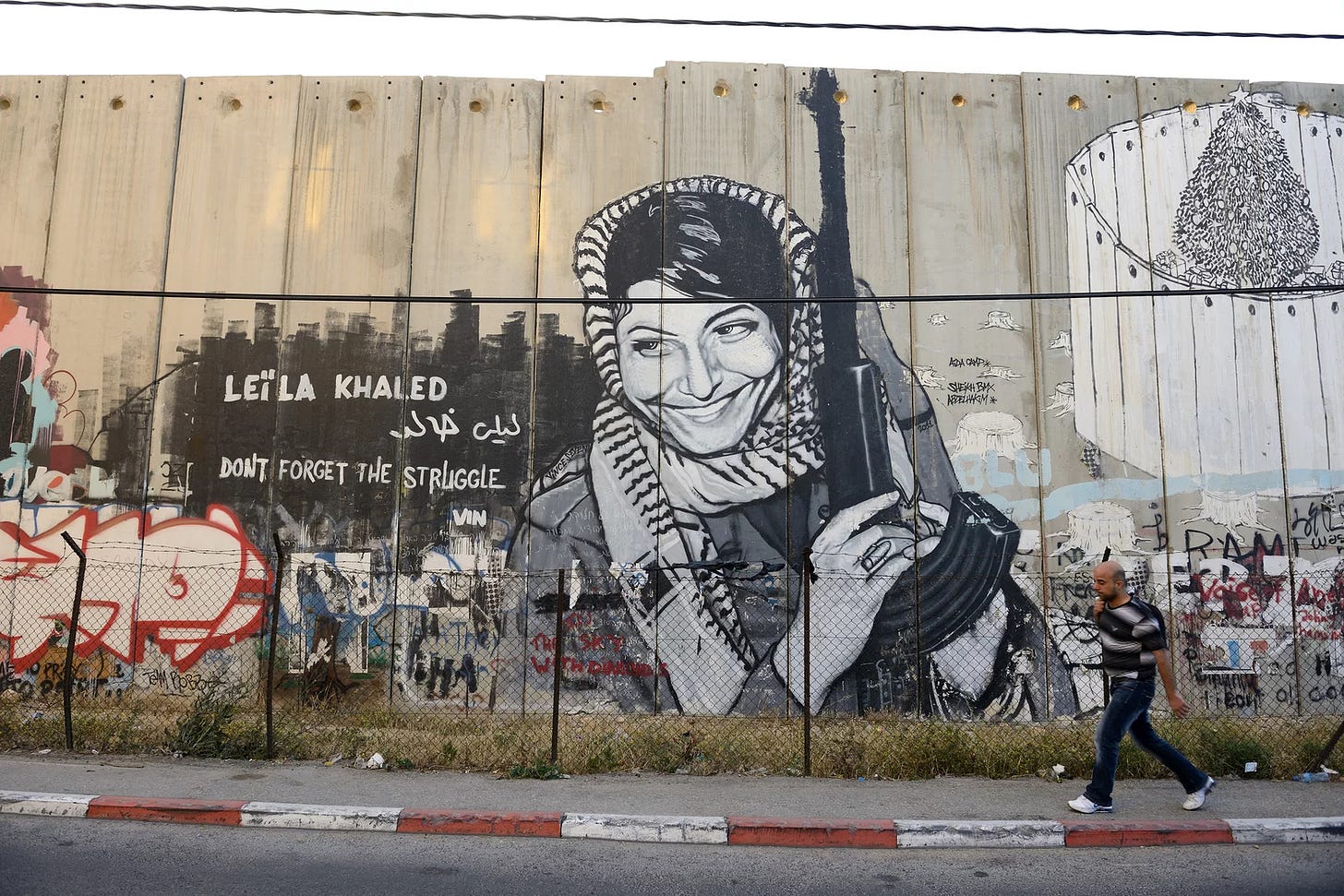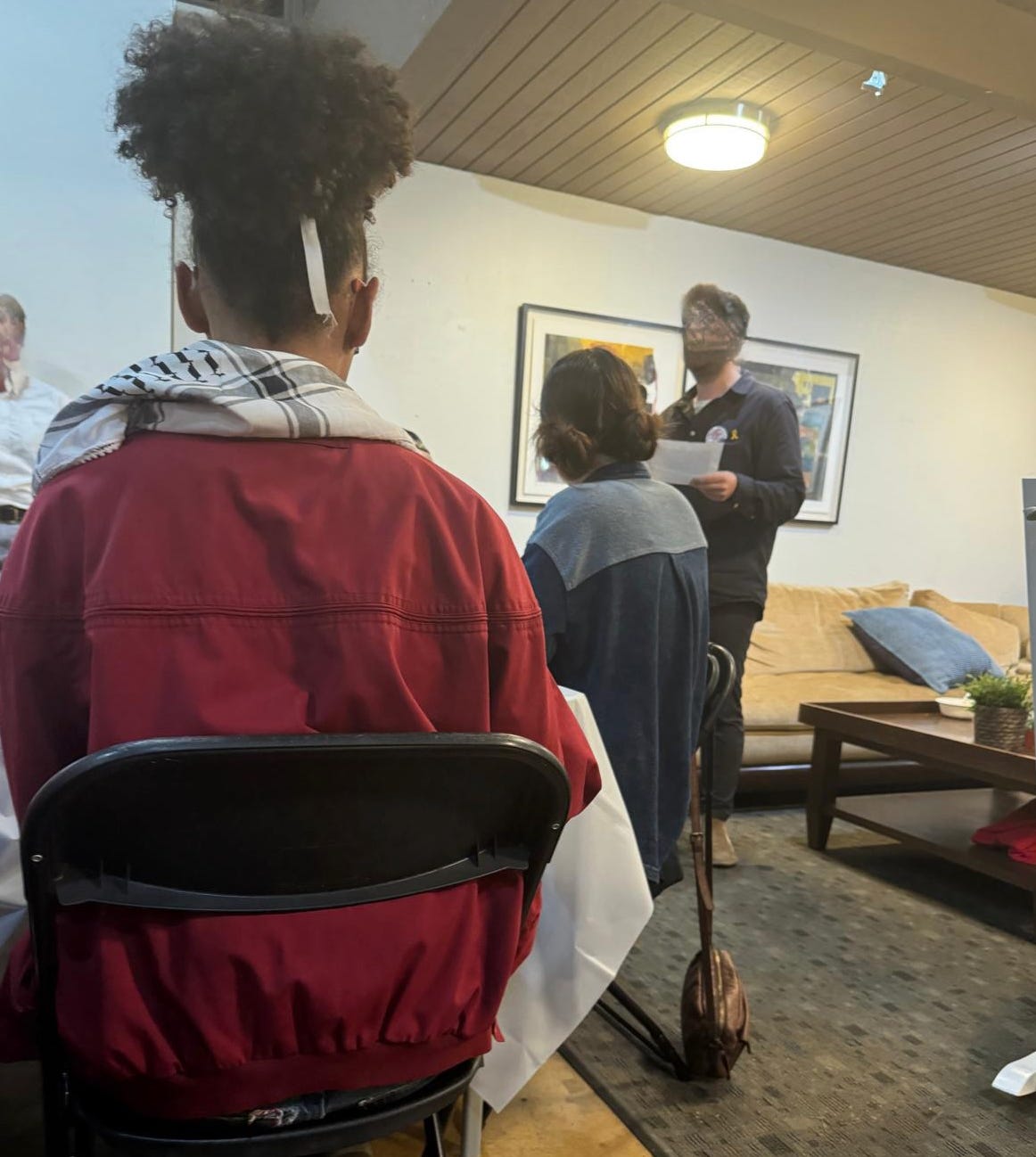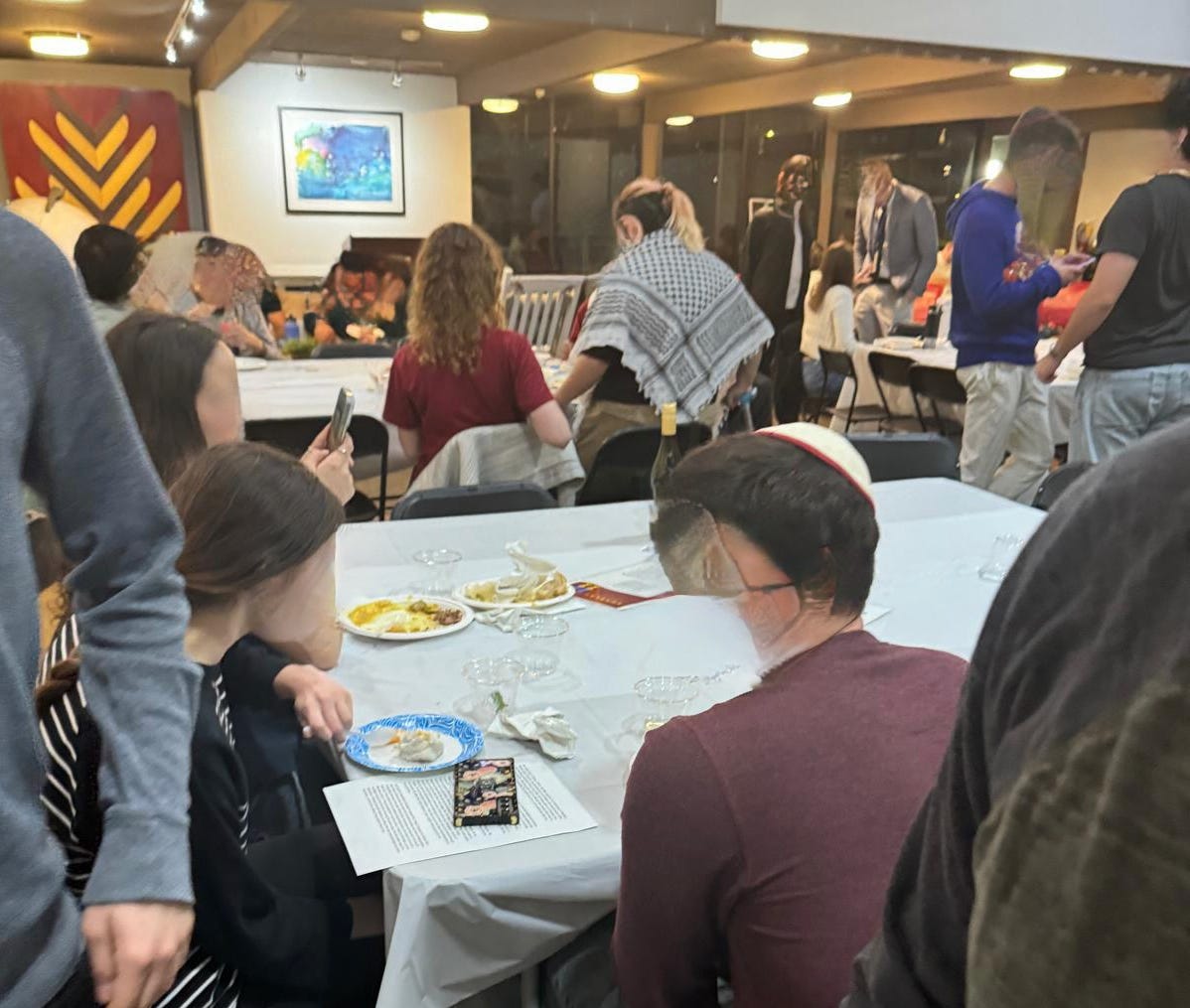
The mission of Hillel is to “Enrich the lives of Jewish students so that they may enrich the Jewish people and the world.” It is a noble endeavor.
[Hillel] envision[s] a world where every student is inspired to make an enduring commitment to Jewish life, learning, and Israel.
For over 100 years, the Hillel movement has been uniquely focused on serving all kinds of Jewish students, no matter who they are or how they express their Judaism. Today, Hillel is the largest Jewish campus organization in the world, serving more than 180,000 Jewish students each year at 850+ colleges and universities around the world. Every day, we strive to bring a spirit of genuine openness and inclusivity into everything we say and do.
Indeed, Hillel’s presence on university campuses means a lot to Jewish students, especially in times like these of persistent and pervasive antisemitism. Hillel provides a space for Jewish students to celebrate Jewish tradition, to connect with Jewish history and Israel, to make friends, and to support each other. This space needs to be protected from antisemites. Unfortunately, two weeks ago at USC Hillel, Sabbath dinner was defiled by antisemitic symbols. Two students showed up wearing keffiyehs—and no one from Hillel leadership confronted them.
This was poor judgement and we call on Hillel to do better next time. Yes, Hillel should be welcoming and inclusive, but when inclusivity conflicts with its mission, the mission should take precedent.
This unfortunate incident has inspired a member of our Circle, Dr. Hagit Arieli Chai, to share her thoughts about the history and mission of Hillel and to reflect on last Friday’s incident. Dr. Hagit Arieli Chai previously wrote for our substack here and here.
Reminder to readers: Posts on this Substack are the opinions of the authors only. Authors do not speak for their employers or any other organization. Institutional affiliations are given for identification purposes only.
Update (March 14, 2025): Following the author’s request, we edited the guest post below as follows: (i) the affiliation of the author was removed; and (ii) photos were removed.
How Hillel Was Founded and How They Serve Jewish Students
A guest post by Dr. Hagit Arieli Chai
The idea behind Hillel dates back to the 1920s when Rabbi Benjamin Frankel graduated from rabbinical school and accepted a part-time pulpit in Champaign, Illinois under the condition that he could continue to work with college students. Thanks to successful fundraising, Rabbi Frankel turned his part-time work with students into a full-time job as the of the leader of Hillel’s first chapter at the University of Illinois, Urbana-Champaign.
In 1924 a Jewish student from the University of Wisconsin, Norman De Nosaquo, praised the founding of Hillel at University of Illinois and advocated for creating Hillel chapters at other universities.
In 1925,
B’nai B’rith President Adolf Kraus note[d], “I believe that foundations such as those now existing at the University of Illinois and at the University of Wisconsin should be extended into all universities and schools for higher education, in which suitable provision is not made for Jewish students, to encourage the cultivation of their Judaism.
The fascinating history of Hillel can be found here.
Today, Hillel also does important work documenting and combatting antisemitism. Last year, Hillel conducted a survey about the rise of antisemitism on campuses and the hostile environment for Jewish students. [Editors’ note: we covered this report here].
According to the survey,
A majority of Jewish students say they feel unsafe due to encampment, with 61% reporting having experienced antisemitism during campus protests.
A majority of Jewish college students feel less safe because of anti-Israel protests and encampments at their school, and report the use of antisemitic, threatening or derogatory language toward Jewish students during those protests. As commencements begin on campuses across the country, a majority of Jewish students are concerned that protests and encampments will disrupt graduation ceremonies, with nearly three-in-four saying they want schools to remove the encampments and/or protests to eliminate the possibility of disruption to commencement and graduation....
The survey was conducted by Benenson Strategy Group from May 6 to May 8 and included 15-minute interviews with 310 Jewish students. The margin of error is 5%. The full topline data can be viewed here. Key findings include:
61% of Jewish students say there has been antisemitic, threatening or derogatory language toward Jewish people during protests at their school
63% of Jewish students feel less safe because of the protests and 58% feel less safe because of the encampments
72% want schools to remove the encampments and/or protesters to eliminate the possibility of disruption to commencement or graduation
40% have felt the need to hide their Jewish identity from others on campus
In the Duke student newspaper The Chronicle, student Zachary Patterson describes how the organizations Jewish Life at Duke (JLD) and Hillel International balanced being proudly Zionist organizations while serving all Jewish students during the challenging year following the October 7, 2023 Hamas attack and the subsequent Israeli military response. He explains that for most American Jews, Zionism simply means believing Jewish people have the right to a democratic state in their historical homeland. He also emphasizes that Israel is not an abstract concept but an established nation entitled to the same legitimacy as any other country.
Patterson explains that while Hillel chapters won’t platform advocates for Israel’s destruction, they welcome all Jewish students regardless of their personal views. He distinguishes between events presenting diverse opinions about Israel (which JLD regularly hosts) versus those questioning Israel’s right to exist.
This is a guiding principle that should be followed by Hillel chapters everywhere. Inclusivity is a virtue, but a line has to be drawn. When inclusivity allows those who champion ideas that are hostile to the very core of Jewish identity to bring these ideas to spaces that are supposed to be safe and welcoming to Jewish students, that line has been crossed. Unfortunately, precisely that line was crossed at USC Hillel.
Last Friday night (February 29, 2025), USC Hillel hosted a Shabbat dinner. Students reported that individuals wearing keffiyehs attended both the Shabbat service and dinner. In doing so, Hillel at USC allowed what many perceive as a symbol of terror into their sacred space on Shabbat—a time of holiness and reflection.
While the keffiyeh is a traditional Middle Eastern garment with cultural significance, its meaning has evolved in different contexts and is now recognized as a sign of terror and resistance. [Editors’ note: see here for brief discussion of the history and political significance of the keffiyeh.]
The keffiyeh has been called the “hipster swastika.” It is worn by pro-Jihadists who are well aware of its symbolism. The wearers of keffiyehs do not engage in substantive dialogue. They are not interested in discussing diverse opinions on complicated issues. We have seen them celebrating the violence of October 7, clapping and cheering for Hamas, and chanting slogans of genocide (“From the River to the Sea” and “The Only Solution, Intifada Revolution”).
At Columbia, Barnard, Washington, Yale, Berkeley, UCLA, and other campuses, pro-Palestinian students have concealed their faces with keffiyehs to avoid identification. Hiding behind a keffiyeh signals, “I am not here to engage with you, but rather, to eliminate you.” Genuine dialogue cannot occur when one side refuses to reveal its identity. If those covering their faces genuinely believed in humanitarian causes, what reason would there be to hide? [Editors’ note: see Masking Identity.] The keffiyeh crowd’s real message is one of hostility. They have chanted “Jews, go back to Poland,” a phrase that carries the horrifying implication of Hitler’s unfinished plan. Can anyone seriously believe that those advocating violence and covering their faces with a symbol of Jihad are really interested in meaningful engagement?
Can Jews truly feel at peace with such a symbol as the keffiyeh in their sacred spaces? Do Jewish students feel comfortable observing Shabbat while surrounded by keffiyehs? The answer, for many, is a resounding “No.”
One student who attended the dinner shared:
I was confused and kept telling myself it must be another type of scarf… The rabbi didn’t say anything at all.
Another expressed shock:
I am stunned that Hillel allowed people to enter their building like that.
A third added:
I would feel so uncomfortable on that Shabbat. This is truly not ok!
The question ultimately boils down to issues of respect, intention, and community norms in sacred spaces. Many religious, ethnic, and cultural communities have clear expectations about appropriate attire and symbols within their spaces—traditions that are meant to foster comfort and belonging for their members.
This incident occurred at an especially painful time for Jewish students and the wider Jewish community, who were mourning the horrific, cold-blooded murder of an innocent mother and her babies—the Bibas family. In this moment of grief, the lack of sensitivity and respect for Jewish students’ needs felt particularly painful, leaving many wondering if their sense of safety and belonging had been sidelined.
Hillel should stay true to its original mission and maintain an environment that is safe and welcoming for Jewish students. Symbols associated with terror are unacceptable in Jewish places and we should not permit those who wear the keffiyeh to enter our safe and holy spaces. Let’s not forget that Hillel was a space for Jewish students to turn to post-October 7 as they were harassed on campus, blocked from accessing classrooms and libraries, and taunted and humiliated for being Jewish. Sporting a keffiyeh at Hillel is not about diversity and inclusion—it is about expressing hostility towards Jews, harassment, and intimidation. It must be stopped.









I’m truly shocked.
Hillel, how could you allow this? These symbols are deeply triggering for Jews, especially Israelis. This isn’t about embracing diversity—it’s about recognizing that these symbols are associated with terror and are worn by those who take pleasure in making Jews feel unsafe. This is unacceptable, and I expect an apology.
Having had interactions with USC Hillel leadership since October 7th, I am not surprised. Standing up firmly against antisemitic and ant-Israel sentiments on campus is not what they choose to do.